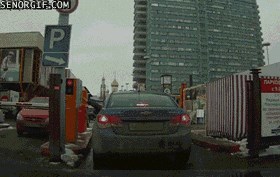Highway Barrier - A Crucial Part of Road Safety

The Pacific Coast Highway, also known as Route 1, is one of the most scenic and picturesque drives in the United States. However, with its undivided rural highways, it can also be a dangerous one. Several accidents on this highway have led to the need for major safety improvements. Fortunately, there is an innovative technique that can significantly improve road safety, and it has been successfully implemented in Sweden and New Zealand. The technique involves the use of narrow-profile highway barriers that prevent head-on collisions and provide a buffer zone for vehicles travelling in opposite directions.
In an effort to increase road safety, the New Zealand government introduced the technique of using narrow-profile barriers on undivided rural highways several years ago. The results have been impressive, with the number of fatal accidents on these roads dropping sharply. Now, there is a possibility of implementing this technique in the United States as well.
The primary goal of introducing highway barriers is to reduce the number of head-on collisions that occur on undivided rural highways. These accidents are often catastrophic and result in numerous fatalities and serious injuries. The narrow-profile barrier provides a physical barrier between vehicles travelling in opposite directions, preventing them from colliding with each other. The barrier also acts as a buffer zone, mitigating the severity of accidents by absorbing the impact of a collision.
Additionally, barriers help to prevent vehicles from veering off the road and into dangerous areas such as steep embankments, deep ditches or other obstacles that can be hazardous to a driver's health. Narrow-profile barriers, in particular, are highly beneficial in this regard as they do not occupy much space and do not impede traffic flow. As a result, drivers are less likely to be distracted by the barriers and may even feel more secure.
Furthermore, the installation of barriers on undivided rural highways can encourage safer driving behaviour. Drivers tend to drive more cautiously when there is a physical barrier between them and incoming traffic. The presence of a barrier could reduce the speed of vehicles making it easier for drivers to take evasive action without significantly increasing the risk of a collision.
In conclusion, highway barriers can significantly enhance road safety and reduce fatalities and serious injuries on undivided rural highways. Their installation serves as a physical barrier between vehicles travelling in opposite directions, preventing head-on collisions and absorbing impact during accidents. With more states in the USA considering the use of narrow-profile barriers, we can hope for a safer future and fewer accidents on our highways.